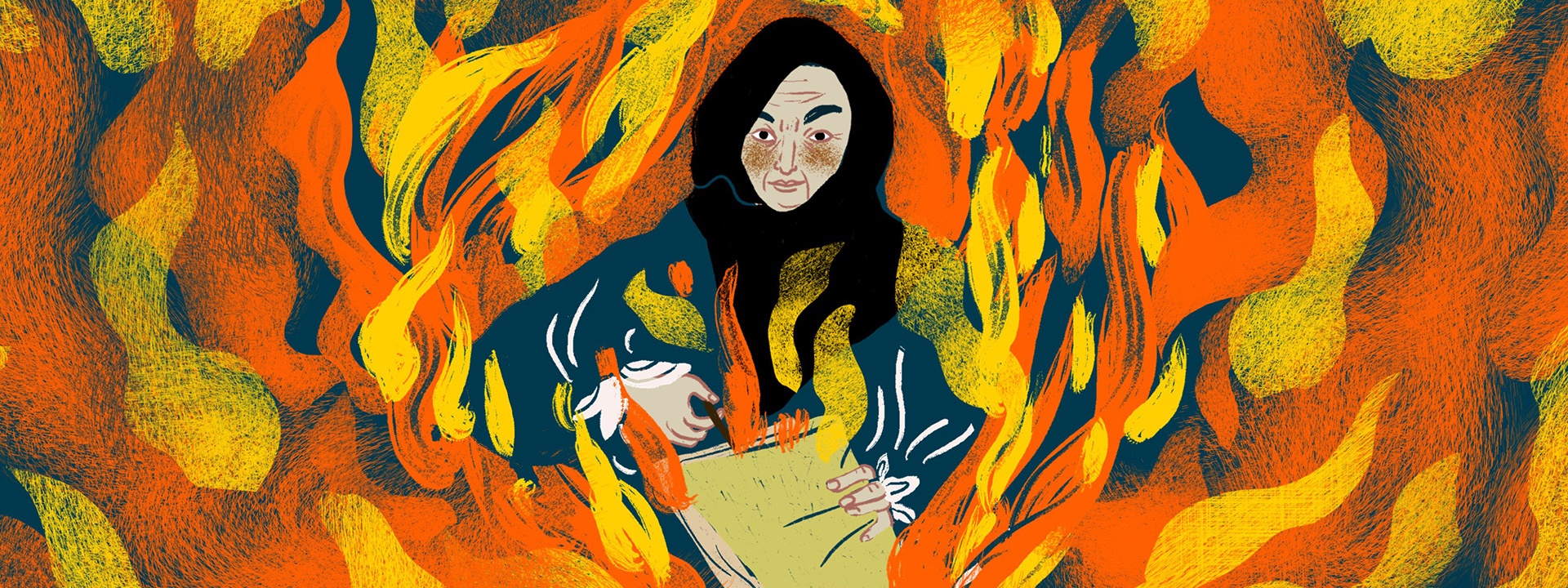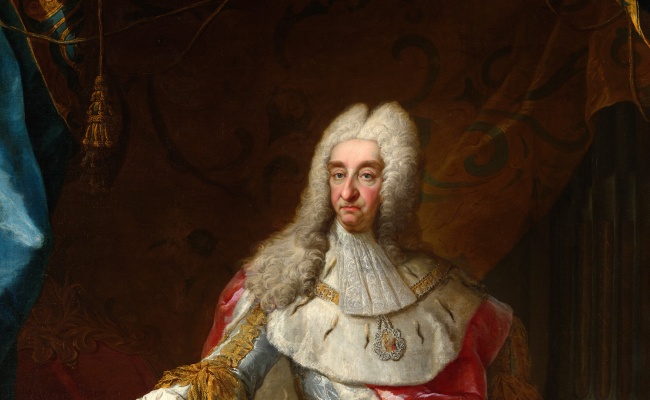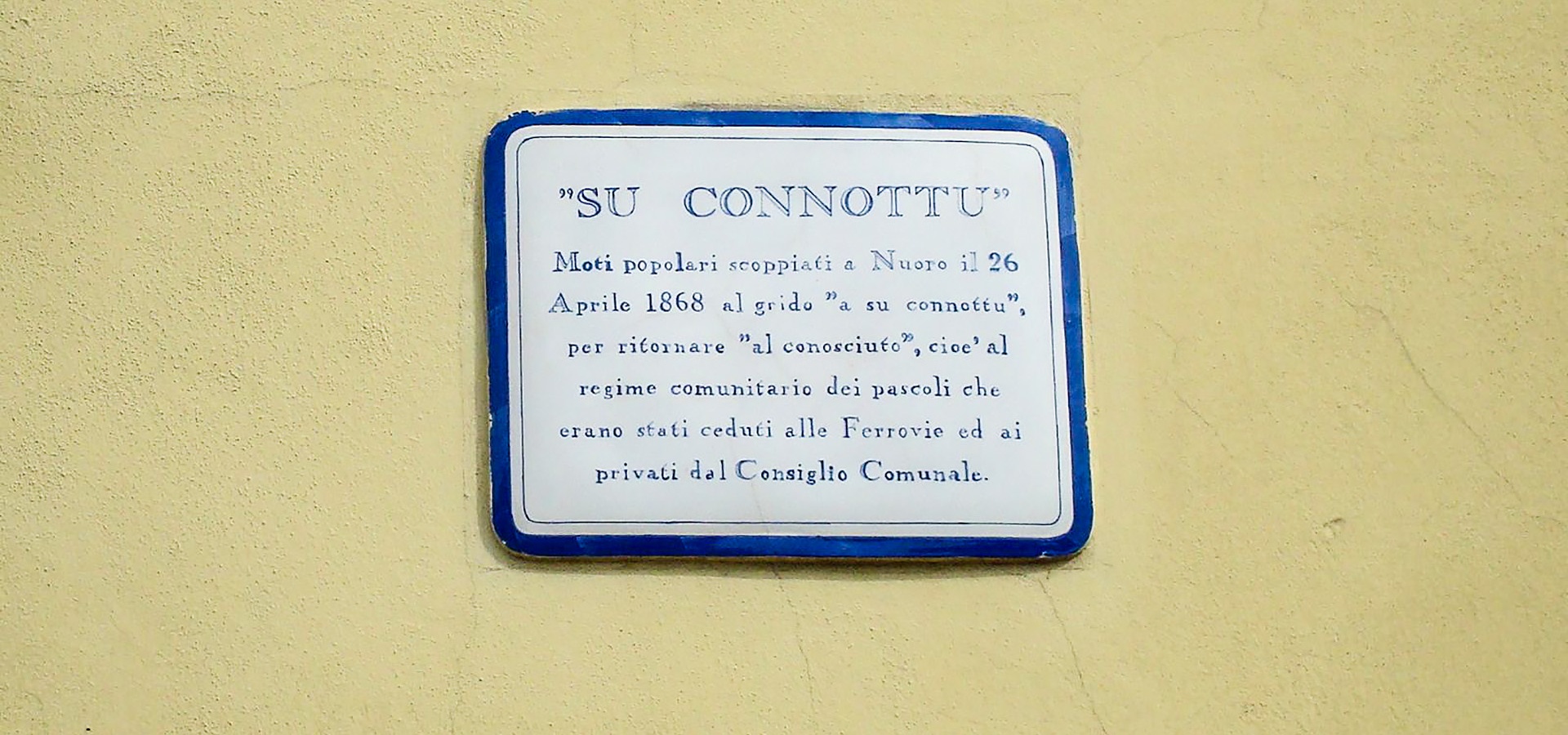In 1820, King Victor Emmanuel I issued an Edict of Allotments, authorising the privatisation of land that had been public property until that time. Forty-five years later, in 1865, a further law abolished the local custom of ademprivio, which had permitted locals to gather wood and fruit and graze their animals on the land.
The Su Connottu revolt
Description
The abolition of these rights created grave financial difficulties for the poorer segments of the population, threatening their survival. Discontent and revolt spread throughout the countryside and the towns.
On 26 April 1868, after it was announced that the last parcels of city land were being put up for auction and a notice was posted instructing the non-landowning shepherds to clear out the land that was up for sale, a rebellion broke out in Nuoro headed by Paska Zau, a sixty-year-old widow and mother of ten children. Leading a band of protesters to the cry of Torramusu a su connottu (Sardinian for ‘let’s go back to the old way’), Paska Zau burst into the town hall and burned the cadastral documents, a symbolic act but also a practical one, since it made it harder to sell the land.
The episode was celebrated by, among others, the poet Salvatore Rubeddu (1848–1891) in a poem in dog Latin titled ‘Passio’ a su connottu. Although tinged with irony and misogyny, the text still presents the historical truth of an episode in which Sardinian women, who were traditionally responsible for managing the family’s financial resources, took the initiative to defend their rights. Rubeddu cites not only Paska Zau, but also her daughter Tonia as well as Tonia Porcu, Tatana Crudu, Mariantonia da Mamoiada, Tonia Ormena and Moritta.
The revolt was instigated by local Freemasons, but the protest was of the people, with all sixty-nine of the arrests being among the lower classes, Zau of course among them, accused of disorder and pillaging. The rebellion was a partial success, delaying the sale of land for a few years (the paperwork was concluded in 1872 and in the meantime the shepherds continued to use the city land).
Thanks to Giorgio Asproni, who was a member of parliament at the time, everyone who had participated was pardoned and a parliamentary inquiry was launched, with a committee headed by Agostino Depretis, to determine the ‘moral, financial and economic situation on the island of Sardinia’, sparking off an important debate over the future of the island.
The Su Connottu revolt and Paska Zau are commemorated on a plaque outside Palazzo Martone, which was the town hall at the time of the rebellion.
 Nuorese Cultural District
Nuorese Cultural District

